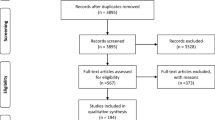Abstract
The purpose of this study was to describe an original technique of reconstruction of the anteromedial bundle preserving the posterolateral bundle and to report the results of a consecutive 36 patients series with mean 24 months follow-up. Our hypothesis is that this selective reconstruction of ACL partial tears could restore knee stability and function. In a consecutive series of 256, ACL reconstructions, 36 patients in which intact ACL fibers remained in the location corresponding to the posterolateral bundle were perioperatively diagnosed. These patients (21 women and 15 men) underwent isolated reconstruction of the anteromedial bundle while keeping the remaining fibers intact. AM bundle reconstructions were performed by the same surgeon using an outside-in technique. A quadrupled hamstring graft was used in 20 patients and a doubled semitendinosus graft in 16 patients. The mean age of the patients at the time of surgery was 32 years (min 15, max 53). The delay between injury and surgery was 6.6 months (min 2, max 35). Patients were assessed with the IKDC ligament evaluation form. Instrumented knee testing was performed with the Rolimeter arthrometer. Statistical analysis was performed to compare the preoperative and postoperative objective evaluation. Eleven concomitant meniscal lesions at the time of reconstruction were found. One patient who underwent a traumatic graft rupture at 4 months post surgery and two patients with previous contralateral ACL reconstruction were excluded, leaving 33 patients for final evaluation. Three reoperations were performed, including two arthrolysis for cyclops syndrome and one revision for a traumatic graft rupture. At last follow-up, 24 (73%) patients were graded A, 8 (24%) graded B and 1 C (3%) at IKDC objective evaluation. Mean side to side instrumented laxity was 4.8 mm (min 3, max 6) preoperatively and 0.8 mm (min 0, max 2) postoperatively. AM bundle reconstruction with an outside-in technique remains simple and reproducible. The preliminary results are encouraging with excellent side to side laxity. Graft size should probably be adapted to limit cyclops syndrome occurrence.

Similar content being viewed by others
References
Adachi N, Ochi M, Uchio Y, Sumen Y (2000) Anterior cruciate ligament augmentation under arthroscopy: a minimum 2-year follow-up in 40 patients. Arch Orthop Trauma Surg 120:128–133
Boileau P, Remi M, Lemaire M, Rousseau P, Desnuelle C, Argenson C (1999) Plea for accelerated rehabilitation after ligament plasty of the knee by a bone-patellar tendon-bone graft. Rev Chir Orthop Reparatrice Appar Mot 85:475–490
Deie M, Ochi M, Ikuta Y (1995) High intrinsic healing potential of human anterior cruciate ligament: organ culture experiments. Acta Orthop Scand 66:28–32
Delincé P, Krallis P, Descamps PY, Fabeck L, Hardy D (1998) Different aspects of the cyclops lesion following anterior cruciate ligament reconstruction: a multifactorial etiopathogenesis. Arthroscopy 14:869–876
Denti M, Monteleone M, Berardi A, Panni AS (1994) Anterior cruciate ligament mechanoreceptors: histologic studies on lesions and reconstruction. Clin Orthop Relat Res 308:29–32
Garofalo R, Mouhsine E, Chambat P, Siegrist O (2006) Anatomic anterior cruciate ligament reconstruction: the two-incision technique. Knee Surg Sports Traumatol Arthrosc 14:510–516
Georgoulis AD, Pappa L, Moebius U, Malamou-Mitsi V, Pappa S, Papageorgiou CO, Agnantis NJ, Soucacos PN (2001) The presence of proprioceptive mechanoreceptors in the remnants of the ruptured ACL as a possible source of re-innervation of the ACL autograft. Knee Surg Sports Traumatol Arthrosc 9:364–368
Ishibashi Y, Tsuda E, Yamamoto Y, Tsukada H, Toh S (2009) Navigation evaluation of the pivot-shift phenomenon during double-bundle anterior cruciate ligament reconstruction: is the posterolateral bundle more important? Arthroscopy 25:488–495
Ochi M, Adachi N, Deie M, Kanaya A (2006) Anterior cruciate ligament augmentation procedure with a 1-incision technique: anteromedial bundle or posterolateral bundle reconstruction. Arthroscopy 22(463):e1–e5
Schultz RA, Miller DC, Kerr CS, Micheli L (1984) Mechanoreceptors in human cruciate ligaments: a histological study. J Bone Joint Surg Am 66:1072–1076
Schutte MJ, Dabezies EJ, Zimny ML, Happle LT (1987) Neural anatomy of the human anterior cruciate ligament. J Bone Joint Surg Am 69:243–247
Sonnery-Cottet B, Chambat P (2006) Anatomic double bundle: a new concept in anterior cruciate ligament reconstruction using the quadriceps tendon. Arthroscopy 22(1249):e1–e4
Sonnery-Cottet B, Chambat P (2007) Arthroscopic identification of the anterior cruciate ligament posterolateral bundle: the figure-of-four position. Arthroscopy 23(1128):e1–e3
Author information
Authors and Affiliations
Corresponding author
Rights and permissions
About this article
Cite this article
Sonnery-Cottet, B., Lavoie, F., Ogassawara, R. et al. Selective anteromedial bundle reconstruction in partial ACL tears: a series of 36 patients with mean 24 months follow-up. Knee Surg Sports Traumatol Arthrosc 18, 47–51 (2010). https://doi.org/10.1007/s00167-009-0855-4
Received:
Accepted:
Published:
Issue Date:
DOI: https://doi.org/10.1007/s00167-009-0855-4




